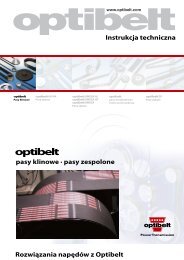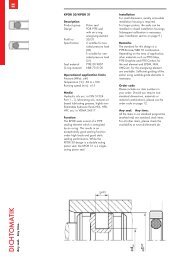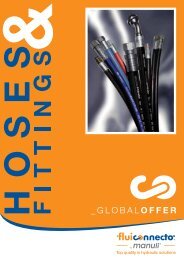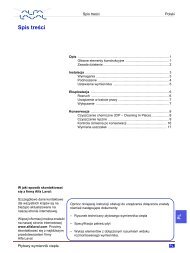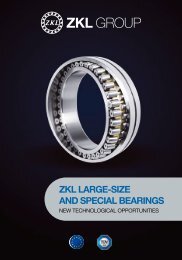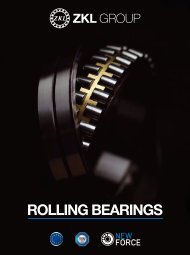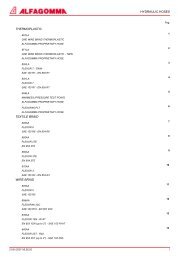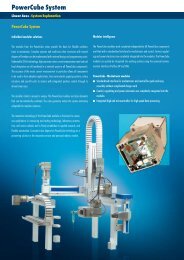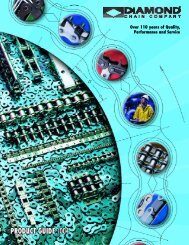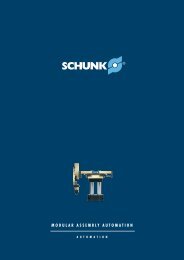DICHTOMATIK
DICHTOMATIK - Spinet
DICHTOMATIK - Spinet
- No tags were found...
Create successful ePaper yourself
Turn your PDF publications into a flip-book with our unique Google optimized e-Paper software.
Materials<br />
For rotary shaft seals, different standard<br />
and special materials are available for<br />
the sealing lip (the elastomer<br />
component), the metal insert and the<br />
tension spring, depending on the type<br />
and application in question.<br />
The material used for the sealing lip is<br />
usually given. The description of the<br />
elastomer materials follows the<br />
nomenclature used in DIN ISO 1629<br />
and ASTM D 1418.<br />
The basic material used in elastomer<br />
for rotary shaft seals is synthetic rubber<br />
manufactured in the chemical industry.<br />
Elastomers differ in the basic polymer<br />
from which they are made. The nomenclature<br />
according to DIN ISO 1629<br />
and ASTM D 1418 is shown in the table<br />
below.<br />
This procedure makes it possible to set<br />
the required material properties and<br />
thereby offer standard materials with<br />
a wide range of uses, as well as<br />
special compounds for highly specific<br />
applications.<br />
The rotary shaft seal is formed in a<br />
vulcanisation process in which the<br />
metal insert is bonded to the elastomer<br />
element. The plastic rubber compound<br />
assumes a rubbery-elastic state and<br />
the rotary shaft seal attains its final<br />
mechanical properties. The lip edge is<br />
created by subsequent cutting or previously<br />
in the moulding tool. Finally,<br />
the tension spring is attached.<br />
The finished material is made by mixing<br />
the basic elastomer with the required<br />
filler materials, softeners, processing<br />
aids, vulcanisation agents, accelerators<br />
and other additives.<br />
Nomenclature for sealing<br />
lip materials:<br />
chemical description<br />
Abbreviation<br />
DIN ISO 1629 ASTM D 1418<br />
Acrylonitrile butadiene rubber NBR NBR<br />
Hydrogenated acrylonitrile butadiene rubber (HNBR) HNBR<br />
Fluoro rubber FPM FKM<br />
Ethylene propylene diene rubber EPDM EPDM<br />
Silicone rubber VMQ VMQ<br />
Acrylate rubber ACM ACM<br />
DIN EN ISO 1043-1 ASTM D 1600<br />
Polytetrafluorethylene PTFE PTFE<br />
( ) = not listed in the standard<br />
7



